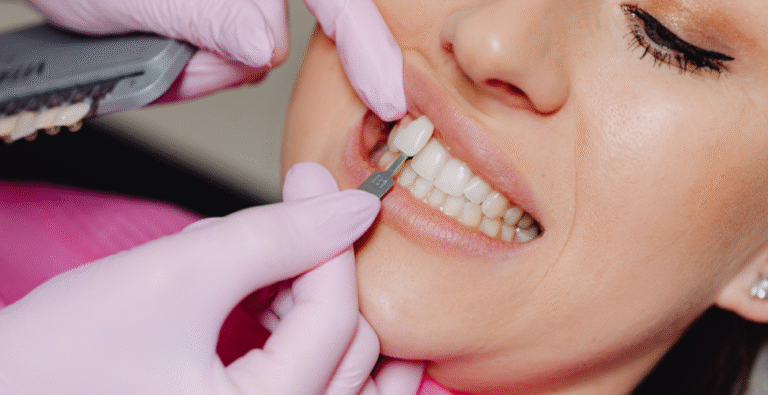Cost Factors for All on 4 Dental Implants
Understanding The All-on-4 Procedure Costs
When you’re looking into All-on-4 dental implants, the first thing that comes to mind is, ‘How much is this going to cost?’ It’s a big investment, for sure, and understanding where that money goes is pretty important. The total price tag for All-on-4 implants can vary quite a bit, but it generally ranges from $15,000 to $30,000 per arch. This figure isn’t just for the implants themselves; it covers a whole process from start to finish.
Initial Consultation And Diagnostic Fees
Before anything gets surgically placed, you’ll have an initial meeting with your dentist. This is where they figure out if All-on-4 is right for you. They’ll do a thorough exam, take X-rays, and maybe even a 3D scan (like a CBCT scan). This helps them see the bone structure and nerves in your jaw. Think of it as the planning phase. These initial diagnostic steps are necessary to create a personalized treatment plan and give you a more accurate cost estimate. It’s not just a quick chat; it’s a detailed assessment.
Surgical Placement Of Implants
This is the core of the procedure. The dentist will surgically place four titanium implants into your jawbone. These implants act as the anchors for your new set of teeth. The surgery itself involves careful planning and execution to make sure the implants are positioned correctly for maximum stability and support. The cost here covers the surgical time, the implants themselves, and any necessary anesthesia. It’s a significant part of the overall expense because it requires specialized skills and equipment.
Abutment And Crown Fabrication
Once the implants have had time to heal and fuse with your jawbone (a process called osseointegration), the next step involves attaching abutments. These are small connectors that stick out from the implants. Then, your custom-made prosthetic teeth (the bridge or denture) are attached to these abutments. The fabrication of these crowns or bridges is done in a dental lab, and it’s a precise process to match your natural bite and appearance. The cost here includes the materials for the abutments and the creation of your new, beautiful smile.
Factors Influencing Your Investment
So, you’re looking into All-on-4 dental implants and wondering what makes the price tag go up or down? It’s not just one thing, really. Several factors play a part in the total cost you’ll end up paying. Let’s break down some of the big ones.
Material Choices For Prosthetics
What your new teeth are made of makes a difference. You’ve got options, and they each come with their own price point. Acrylic is usually the most budget-friendly choice. It’s lighter and can look pretty good, but it might not be as durable as other materials over the long haul. Then there’s porcelain fused to metal, which offers more strength and a natural look, but it’s a step up in cost. Finally, all-ceramic or zirconia prosthetics are often the top-tier option. They’re incredibly strong, look very natural, and are resistant to staining, but they also represent the highest investment.
Complexity Of Your Case
Everyone’s mouth is different, right? If your bone structure is already pretty good and you don’t have many other dental issues, the procedure might be more straightforward. But if you need extra work done before the implants can even go in – maybe some teeth removed, or if the bone loss is significant – that adds time and complexity, which naturally affects the cost. Think of it like building a house; if the foundation is already solid, it’s less work than if you have to dig down and reinforce it first.
Geographic Location Of Your Dentist
Where your dentist’s office is located can also impact the price. Dentists in major metropolitan areas or high-cost-of-living regions often have higher overhead costs, which can be reflected in their fees. This doesn’t necessarily mean they’re better or worse than a dentist in a less expensive area, but it’s a factor to consider when comparing quotes. It’s always a good idea to get a few consultations to see the range of pricing in your specific area.
Additional Considerations For Total Investment
Beyond the main surgical costs, a few other things can add to the total price tag for your All-on-4 implants. It’s good to know about these upfront so there are no surprises.
Bone Grafting Requirements
Sometimes, if your jawbone isn’t thick or strong enough to support the implants, you might need a bone graft. This is a procedure where bone material is added to your jaw. It can be your own bone, or donor bone, or even synthetic material. It’s done to create a solid base for the implants to anchor into. This extra step adds to the overall cost, and the amount can vary depending on how much grafting is needed and what type of material is used. It’s not always necessary, but if it is, it’s an important part of making sure your new teeth are stable for years to come.
Sedation Options
Many people opt for sedation during dental implant surgery to stay comfortable and relaxed. There are different levels of sedation available, from mild nitrous oxide (laughing gas) to deeper IV sedation. Each option comes with its own cost. The more advanced the sedation, the higher the price. Your dentist will discuss these options with you during your consultation to help you choose what’s best for your comfort level and budget. It’s a personal choice, but it does factor into the final investment.
Post-Operative Care And Follow-Ups
After the surgery, you’ll need to come back for check-ups. These appointments are important for making sure everything is healing correctly and that the implants are integrating well with your bone. Your dentist will also check the fit of your temporary or permanent prosthesis. Sometimes, minor adjustments might be needed. The cost of these follow-up visits is usually included in the overall treatment plan, but it’s worth confirming. Good aftercare is key to a successful outcome, so don’t skip these appointments!
It’s really about making sure the foundation is solid before building anything on top. Think of it like preparing the ground before you build a house – you want it to be stable.
Finding A Skilled Dentist in Dana Point
Finding the right dentist in Dana Point for your All-on-4 implants is a big step. It’s not just about finding any dentist; you want someone who really knows their stuff, especially when it comes to complex procedures like this. A skilled professional can make all the difference in the outcome and your overall experience.
Experience of the Dental Professional
When you’re looking for a dentist in Dana Point, check out their background. How long have they been placing implants? Do they have specific training in All-on-4 or similar full-arch restoration techniques? Some dentists focus more on general dentistry or cosmetic procedures, while others specialize in implantology. You’ll want someone with a solid track record in implant surgery and restoration. Don’t be afraid to ask about their continuing education and any advanced certifications they hold. It shows they’re committed to staying current with the latest advancements in dental implant technology.
Clinic Reputation and Patient Reviews
What are other patients saying about their experience with a particular dentist? Online reviews can give you a good sense of what to expect. Look for comments about the dentist’s chairside manner, the staff’s professionalism, and the overall clinic atmosphere. A dentist who is also a skilled cosmetic dentist Dana Point might be a good choice if you’re also concerned about the aesthetic appearance of your final smile. A good reputation often means a history of satisfied patients and successful treatments.
Financing Options Available
All-on-4 implants are a significant investment, so it’s important to understand the financial side. Ask the dental office about payment plans, financing options, or if they work with third-party lenders. Some clinics offer in-house financing or have partnerships with companies that specialize in medical and dental loans. Understanding these options upfront can help you budget for the procedure and make it more manageable. It’s always a good idea to get a detailed breakdown of all costs involved before you commit to treatment.
Long-Term Value Of All-on-4 Implants
When you’re looking at the cost of All-on-4 dental implants, it’s easy to get caught up in the upfront price tag. But really, you need to think about the long game, you know? What are you actually getting for your money over time?
Durability and Longevity
These implants are built to last. We’re talking about a solution that can keep you smiling for decades, often 15 to 20 years or even longer with good care. Unlike traditional dentures that can slip and wear down, All-on-4 implants are fixed firmly in place. They don’t just replace your teeth; they restore your bite and chewing ability, which is a pretty big deal. The materials used, like titanium for the implants and high-quality acrylic or porcelain for the crowns, are chosen for their strength and how well the body accepts them. This means fewer replacements and less hassle down the road.
Impact on Quality of Life
This is where the real value shines through. Think about being able to eat whatever you want again – apples, steak, corn on the cob – without worry. No more hiding your smile because you’re self-conscious about missing teeth or ill-fitting dentures. People often report a huge boost in confidence and a return to enjoying social situations and food. It’s not just about having teeth; it’s about regaining a part of your life that you might have lost.
Maintenance and Replacement Costs
Of course, nothing lasts forever without some upkeep. Regular dental check-ups are a must, usually every six months, just like with natural teeth. Your dentist will check the implants, the gums, and the prosthetic teeth. Sometimes, the acrylic teeth on the prosthetic might wear down over many years and need to be replaced or relined. This is usually a much smaller cost than getting a whole new set of implants. It’s more like routine car maintenance than a major engine overhaul. So, while there are ongoing costs, they’re generally predictable and manageable compared to the potential costs and discomfort of dealing with failing dentures or other tooth replacement options.
Wrapping Up the Cost Conversation
So, when you look at the price tag for All-on-4 implants, remember it’s not just about the implants themselves. You’re paying for a whole lot of skill, advanced technology, and the materials that make this treatment work so well. Different dentists will charge differently, and where you live plays a part too. It’s a big decision, for sure, but understanding these cost pieces can help you figure out if it’s the right path for your smile and your budget. Talking directly with a few dental offices about what’s included in their quotes is really the best way to get a clear picture.
Frequently Asked Questions
What happens during the first visit and what costs are involved?
Think of the initial check-up like a detective mission for your teeth. The dentist figures out exactly what’s going on, takes special pictures, and plans the whole surgery. This part helps make sure everything goes smoothly later on.
What’s involved in the actual surgery to put the implants in?
This is the main event where the dentist carefully places the titanium posts into your jawbone. These posts are like the strong roots for your new teeth. It’s a big step in getting that confident smile back.
How are the new teeth made and attached to the implants?
After the implants are in place and have healed, special connectors called abutments are attached. Then, a beautiful new set of teeth, often called a bridge or denture, is made to fit perfectly on top. This is what gives you a full, natural-looking smile.
How do the materials used for the new teeth affect the total cost?
The kind of materials used for your new teeth can change the price. Some materials look super real and are very tough, while others might be a bit less expensive. Your dentist can help you pick the best option for your smile and budget.
Do I need bone grafting, and how does that impact the price?
If your jawbone isn’t as strong as it needs to be, you might need extra steps like bone grafting before the implants can go in. This is like adding a little extra support to make sure the implants stay put for a long time. It adds to the overall cost, but it’s important for success.
How long do All-on-4 implants usually last, and are they worth the money?
All-on-4 implants are built to last for many years, often a lifetime with good care. They are a really good investment because they look, feel, and work just like natural teeth, making it easier to eat, talk, and smile without worry.






